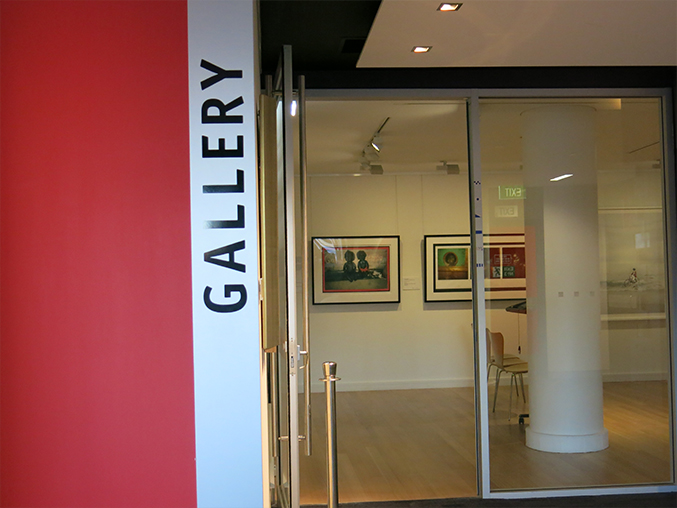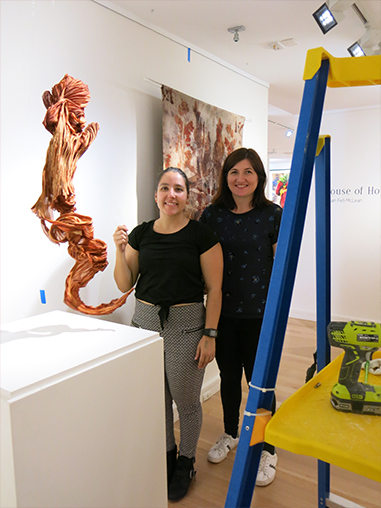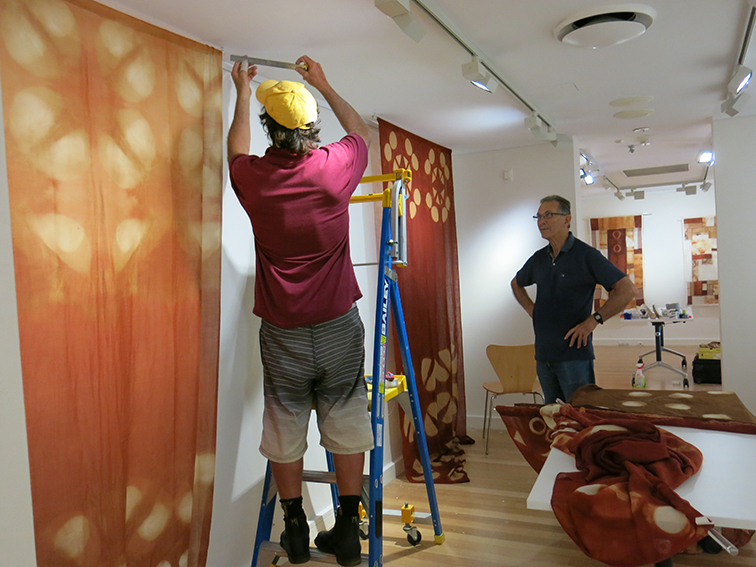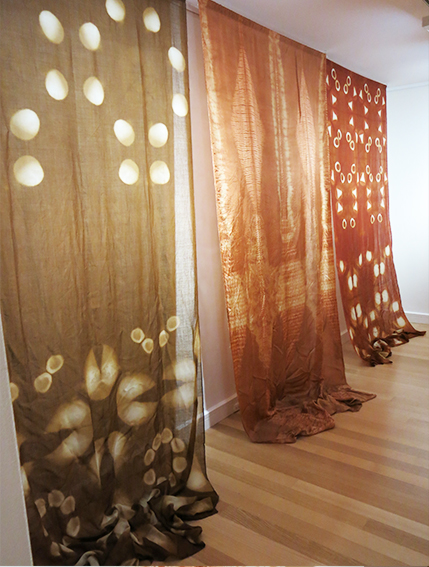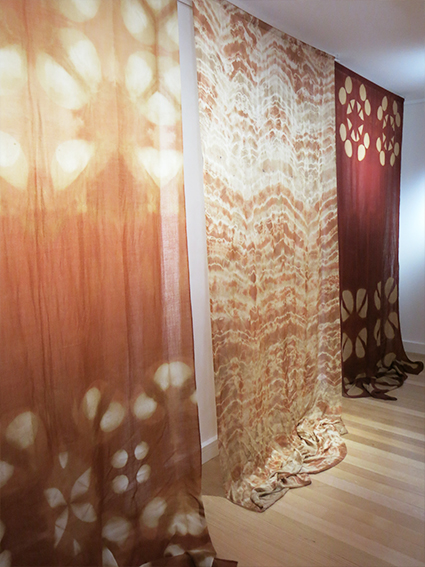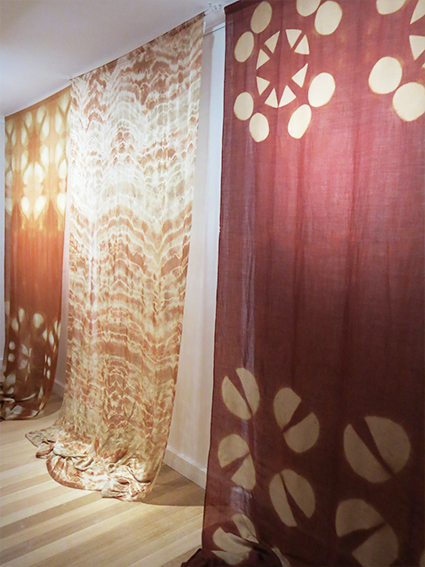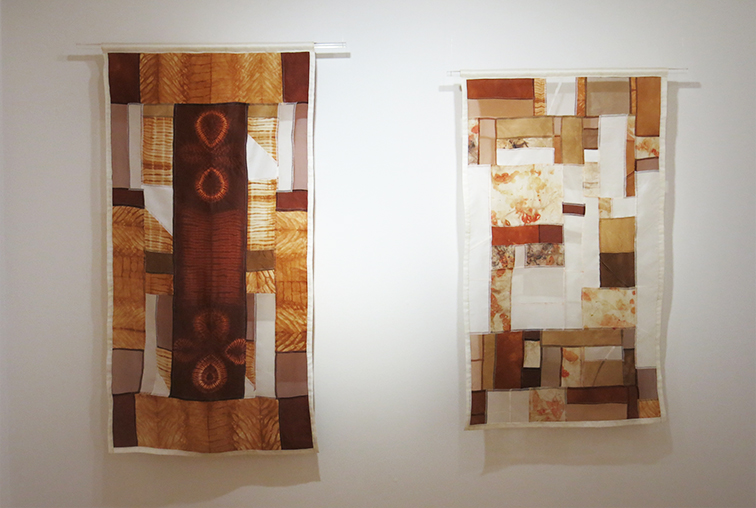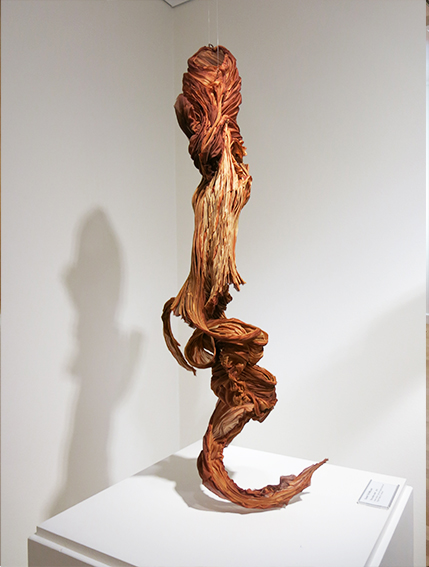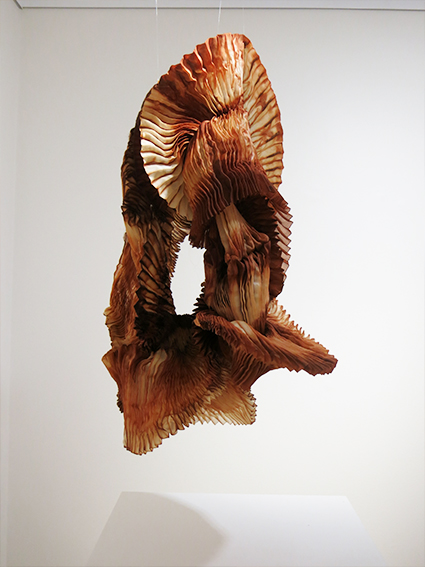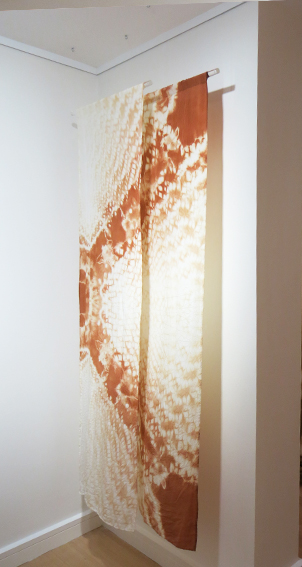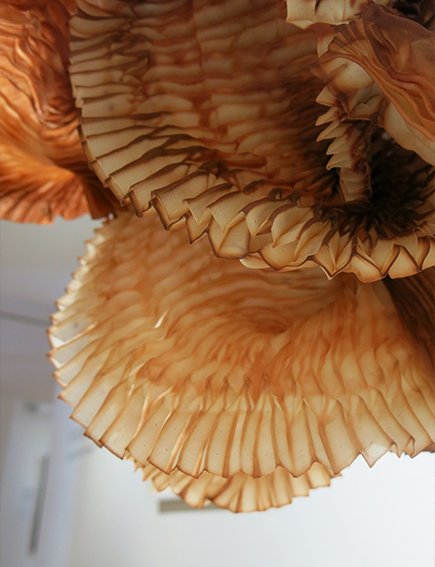
Artist Statement:
At a time when the environment of our planet is suffering a disastrous assault from pollution, runoff, from synthetic dyes used in the textile industry, flows freely into many rivers throughout the world. Imagine a river that changes colour three times each day – pink in the morning, yellow with the early afternoon dyeing, and green as the sun goes down. This “House of Hope” is an invitation to meditate on the environmental consequences.
In the context of a reviving interest, globally, in plant dyes and the gathering momentum of the concept of Eco Culture, this exhibition expresses globally unique insights into natural plant dyes, using no chemical mordants.
Thai artist Montien Boonma, in 1997, invited his audience to enter the space of a Buddhist – inspired installation titled “House of Hope”. Made of thousands of strings of medicinal herbal prayer beads, it was a space in which to mediate.
Awareness of fragility of the natural environment and our impact within nature, were important to him, as were ideas of human illness and healing.
“On entering my ‘House of Hope’ installation, the audience is invited to consider this same relationship, in light of environmental pollution caused by the very textiles we wear and use each day. ‘House of Hope”, invites an alternative awareness of the beauty of natural dyes”.
“Today, globally there is a resurgence of interest in dyes from nature. Natural Dyes generate both monetary and non monetary value and bear the seeds of a sustainable future. With increasing emphasis on the interconnectedness of the environment to social, cultural and economic dimensions of sustainable development, it is possible, in many world situations, to envisage natural dyes as a central pillar for sustainable development.
“This exhibition is the consolidation of extensive research I have undertaken into eucalyptus. Eucalyptus colour for protein fibres (wool and silk) does not have historical parallels anywhere in the world.
While indigenous weavers and twiners, particularly in northern Australia, have used eucalyptus to colour cellulose fibres (baskets and the like) the use of eucalyptus as a protein colourant, does not have an indigenous heritage in this country, and very little documentation”.
Internationally recognised textile artist, Susan Fell from Mullumbimby specialising in shibori and natural dyes. She draws on her recent attendance as guest presenter at the UNESCO Madagascar Festival of Plants Ecology and Colour, where scientists, writers, dye experts, artists and traditional practitioners gathered to share latest research. The conference explored the economics and science of dyes from nature, environmental impact of synthetic dyes and nature conservation, non timber forest valuing, contemporary applications of natural dyes and traditional culture as well as the sheer beauty and fun of plant dyes.
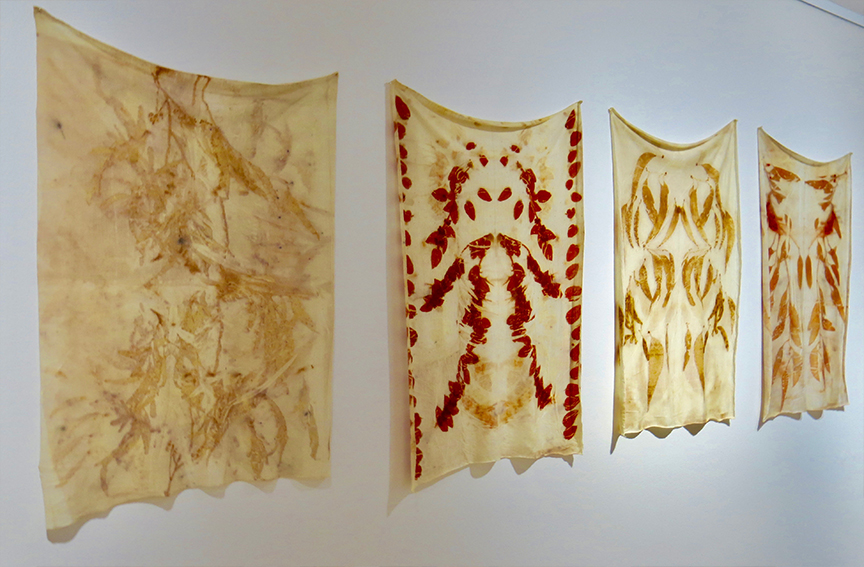
Eucalyptus species used in this exhibition
Scribbly Gum – Eucalyptus signata
Argyle Apple – Eucalyptus cinerea
Buxton Gum – Eucalyptus crenulata
Red Ironbark – Eucalyptus sideroxylon
Yellow Box – Eucalyptus melliadora
Narrow Leafed Peppermint – Eucalyptus radiata
Spotted Gum – Corymbia maculate
Shibori: shaped resist
Arashi shibori – pole wrapped
Itajime shibori – board clamped
Ori nui shibori – stitched
Maki nui shibori – stitched
Karamatsu shibori – stitched
Ropetwist shibori – twisted tension
Tesugi Shibori – wrapped around a core
About Gilles Deleuze
“My work contributes to critical debate. Writings of Gilles Deleuze (The Fold 1993 ) seems pertinent to the art of shibori, as I interpret age old textile traditions into contemporary contexts.
In The Fold (1993) Deleuze proposes a new and radical way of understanding philosophy and art. Philosophy, science, and art are equally, and essentially, creative and practical, each analysing reality in different ways.
He interprets the world as a body of infinite folds that weave through compressed time and space.
An unfolding … always accompanies the fold, producing new folds… opening us out to that which is yet to be folded.
… interiority and exteriority (appearance and essence, or surface and depth)
… the fold announces that the inside is nothing more than a fold of the outside
… the fold of our material selves, our bodies – the folding of time, or simply memory
… subjectivity might be understood as precisely a topology of these different kinds of folds
